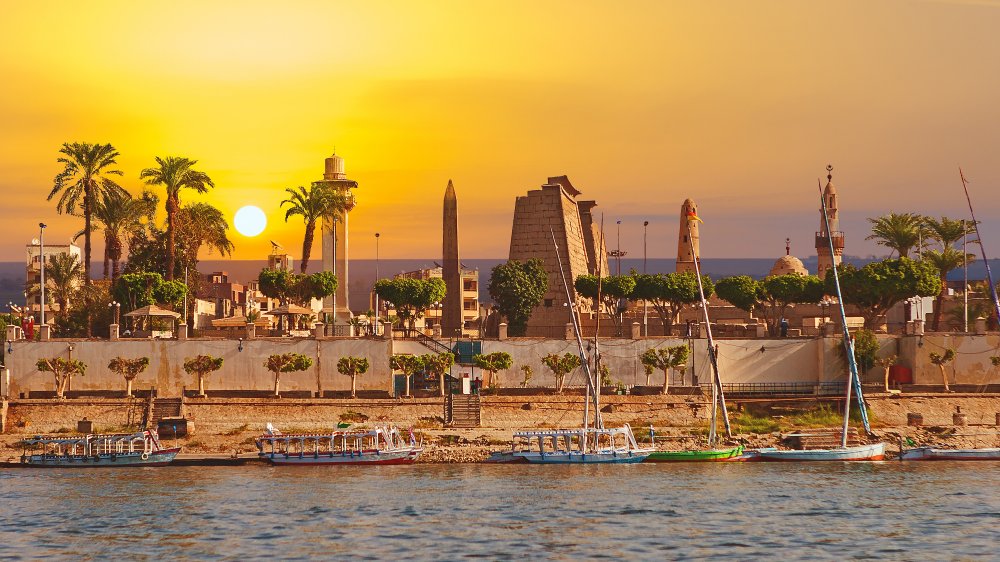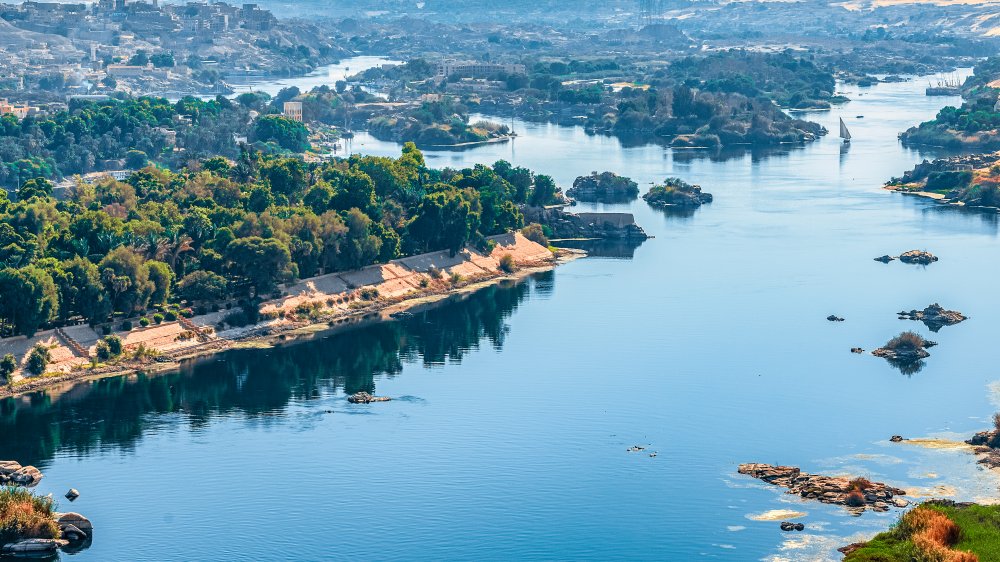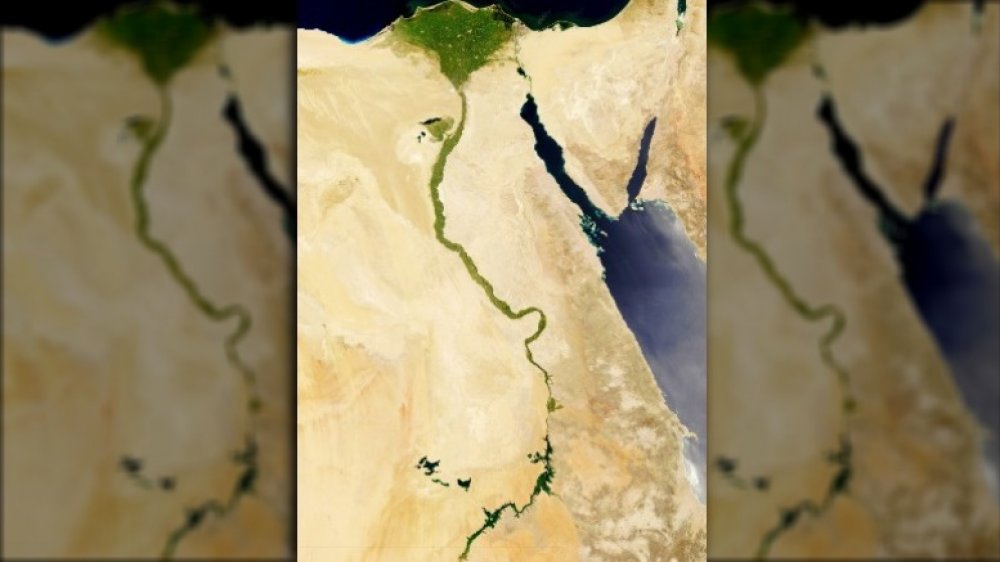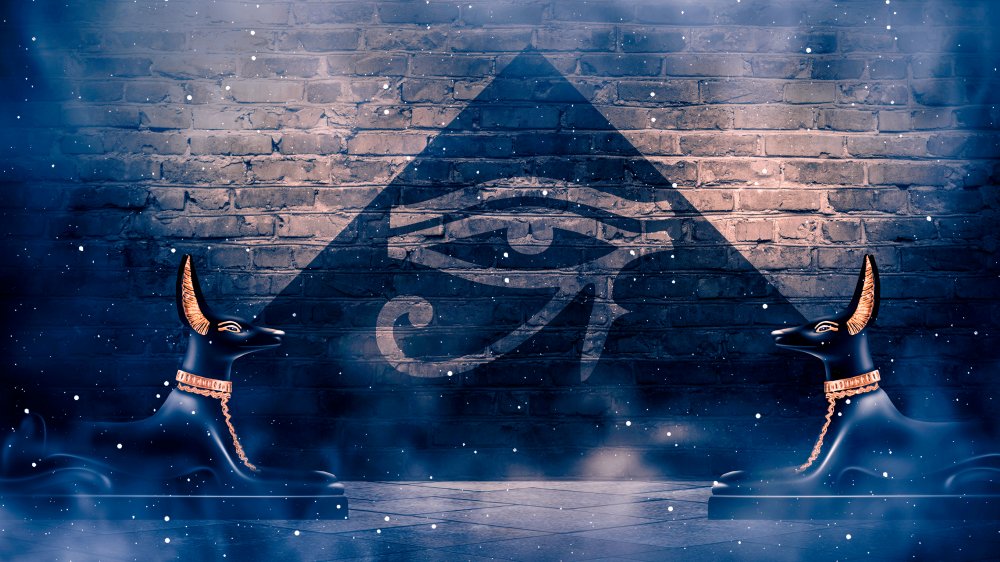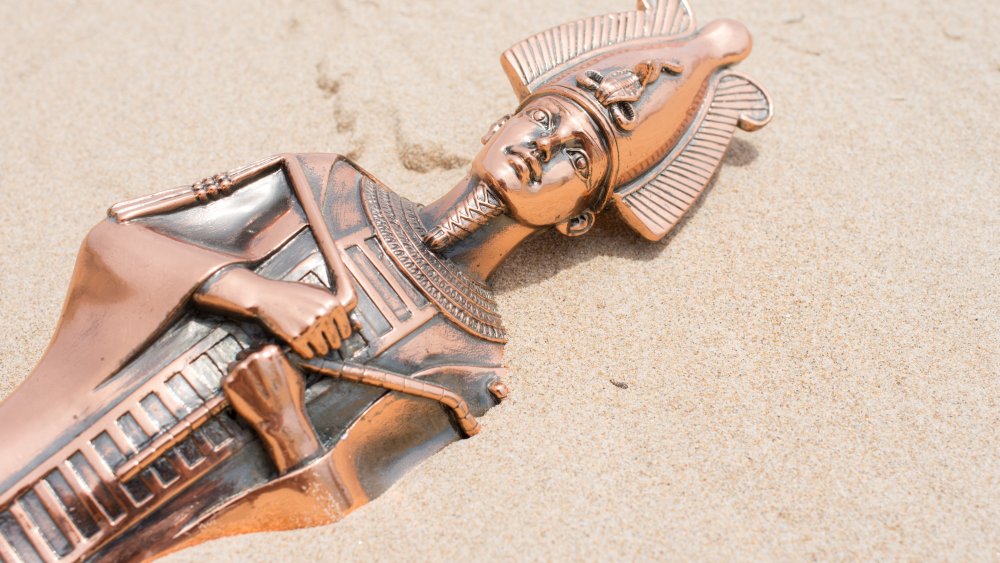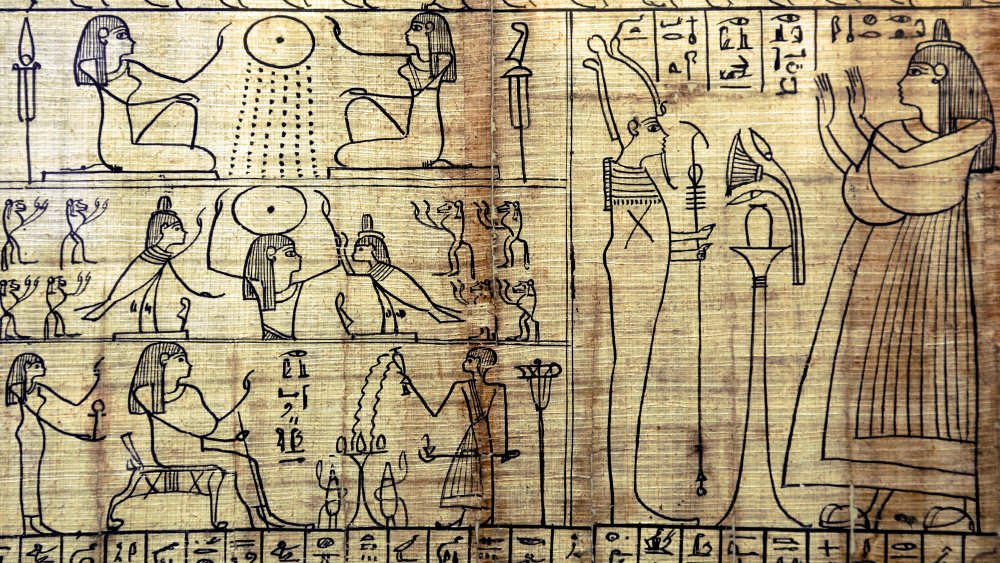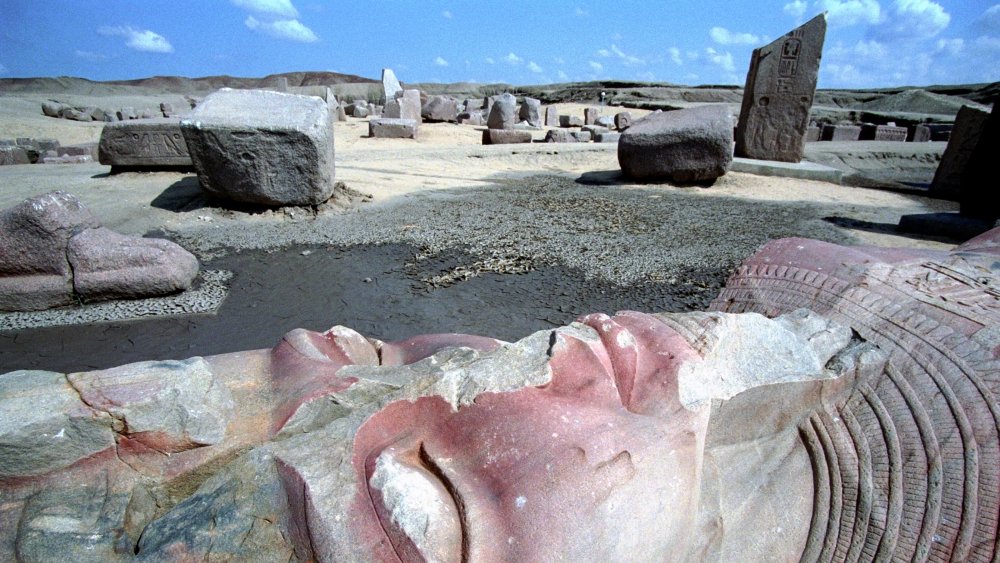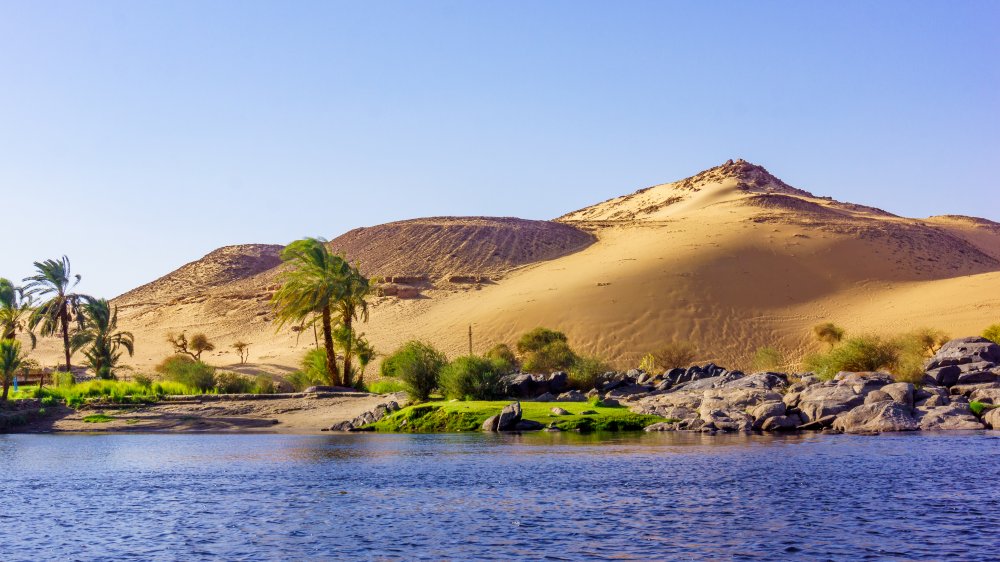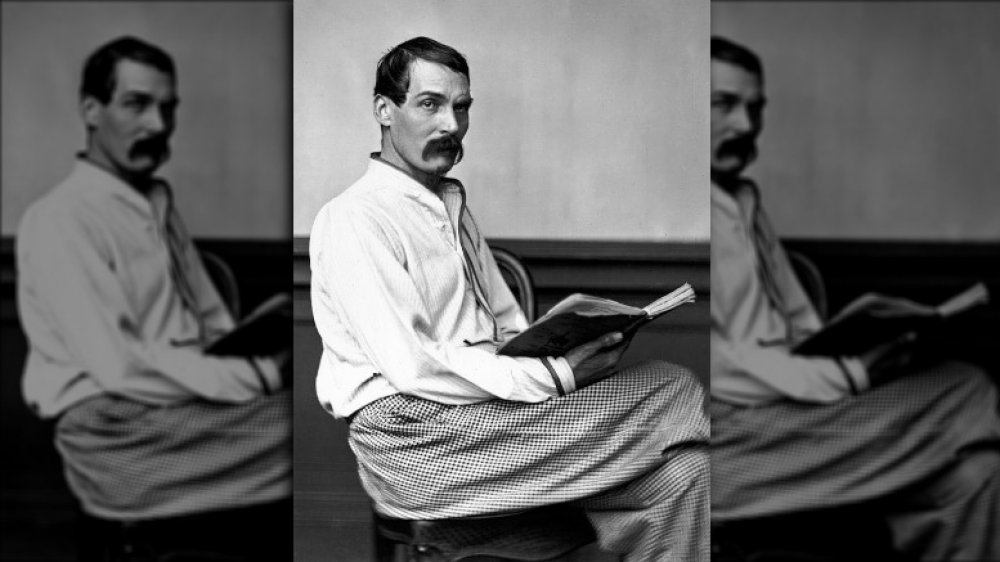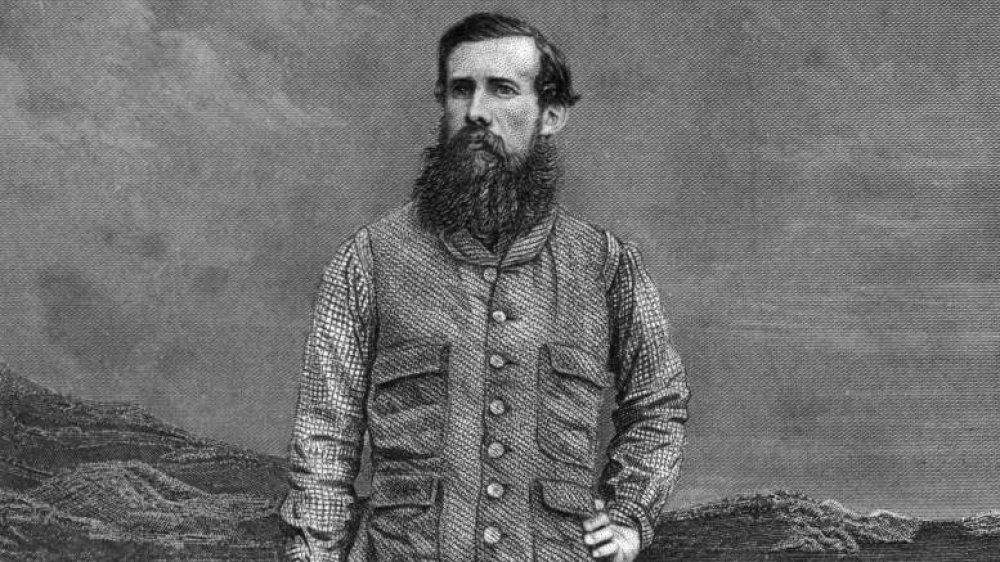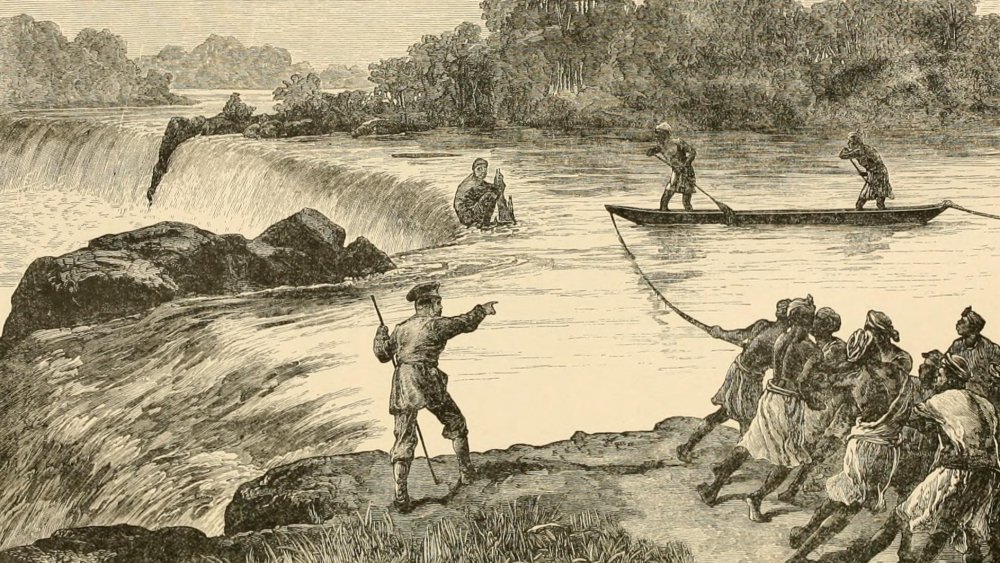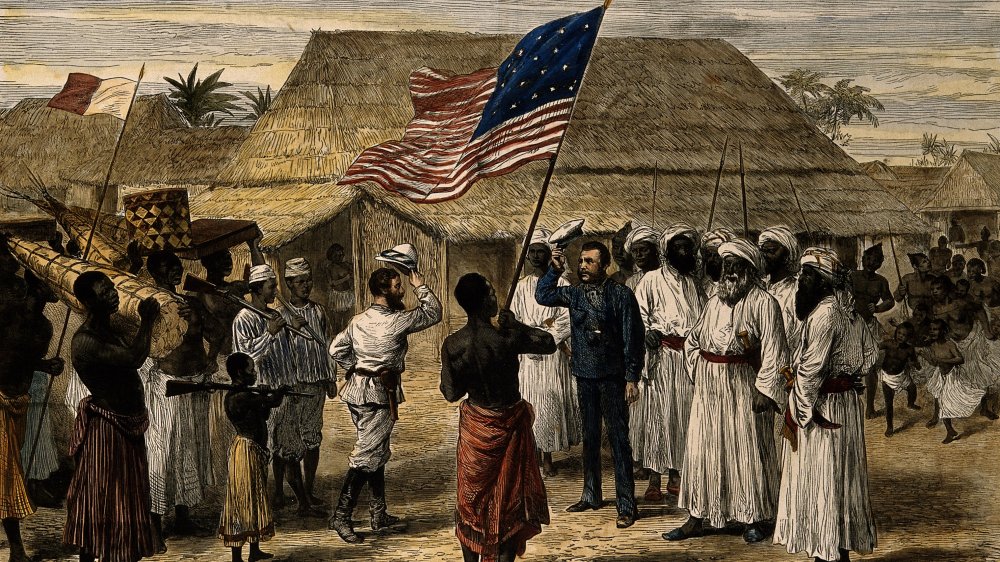The Bizarre History Of The Nile River
There's no sense being in denial — we've all heard of the majestic Nile River, the huge body of water that flows through most of northeastern Africa. But what do you really know about the long, crazy history surrounding it?
It's not just all about crocodiles and Cleopatra lounging on a royal barge. The Nile has been the center of myth, legend, and adventure for millennia. From ancient tales about chopping gods into pieces and seeding the earth with life from their private parts to Victorian adventures, the Nile has loomed large in people's imaginations for basically as long as there have been people.
And no wonder — it's pretty much single-handedly responsible for making life possible in northeastern Africa and giving us some of the coolest civilizations of the ancient world. Its history is a tale full of almost as many twists and turns as the river itself — and we're still learning about its mysteries today.
Basics about the Nile River
At more than 4,100 miles long, according to Encyclopedia Britannica, the Nile River is the longest river in the world. It flows through a massive part of northeastern Africa, starting south of the equator and ending up at the Mediterranean Sea. HowStuffWorks explains that the Nile actually consists of three different tributaries flowing together: the White Nile, the Blue Nile, and the Atbara River. Each adds both water and a different color sediment to the main river's flow — that's where the rivers get their names.
But the Nile isn't just confined to its own banks. As National Geographic notes, it floods regularly, irrigating the dry plains of Africa. Plus, the river deposits nutrient-rich silt along that flood plain, making it possible to grow crops in what would otherwise be desert. Without the Nile, we wouldn't have had ancient Egypt ... or several other amazing civilizations.
The origin of the name "Nile" itself is shrouded in mystery. Some scholars, like those at Britannica, say it comes from the Greek root "neilos," meaning "river valley," but the folks at the Online Etymology Dictionary claim it comes from a Semitic word that also means "river." According to the British Museum, the Egyptians called the Nile "iteru," which simply means "the river." Regardless, when you name something its very definition, you know it must be super-important.
The Nile River is kinda weird
The Nile is one of the few rivers that flow northward. But as geographer Andrew Johnston notes for Smithsonian Magazine, that's just because like all rivers, it flows downhill — in this case, "downhill" simply happens to be north. But because most rivers in the northern hemisphere flow south, the Nile was a source of mystery to both ancient people and later Western explorers.
The Nile is also a pretty young river, as rivers go. The University of Texas at Dallas explains that the geological history of the Nile River is fairly short, with the oldest of five periods dating back six million years to when the Mediterranean Sea evaporated. Sometime between 10,000 and a million years ago, a chunk of the Nile took a massive detour from its straight course. A NASA study revealed that tectonic activity in that era probably forced his diversion, known as the Great Bend of the Nile, which eventually dictated where humans would end up settling.
According to UT Dallas, the Nile as we know it has only been around for about 12,000 years. People probably moved to the area from the Great Rift Valley around 5,000 years ago, going on to found the Egyptian empire. Today, HowStuffWorks notes that nearly 95 percent of modern Egyptians live along the banks of the Nile — it's still critical for life in the region, just as it was millennia ago.
Ancient myths about the Nile River
The Nile was super-important to several ancient civilizations, from the Nubians and Kushites to, of course, the Egyptians. There were tons of myths about the Nile, which the Egyptians called the "Father of Life" and the "Mother of All Men," according to the Ancient History Encyclopedia.
Several major Egyptian gods were associated with the Nile, including Hapi and Khnum, who were thought to embody the river and control its flow. Ancient Egypt Online explains that Khnum may have been one of the most ancient regional gods, predating the pharaohs. He was thought to control the river's flood stages and to have used the rich clay deposited along the Nile's banks to create all the other gods, as well as people and possibly even the sun itself.
Meanwhile, chubby god Hapi (also spelled Hapy) didn't have a temple of his own but was worshiped on the banks of the Nile north of Aswan, where the Egyptians may have thought the Nile originated, according to the BBC. A bringer of water, food, and gifts of abundance, Hapi was offered annual sacrifices and hymns to ensure the river's continued flood cycle and Egypt's prosperity.
Osiris, Isis, and the Nile River
One major Egyptian legend about the Nile involved the god Set murdering his brother, Osiris, and leaving his body in the Nile. As the Ancient History Encyclopedia relates, Osiris's wife, Isis, went looking for the corpse. When she found it, she started preparations to reanimate her dead husband — but Set managed to get his hands on the body, chop it into pieces, and scatter the bits around Egypt. Different sources set the exact number of pieces at either 14, 16, or 42, according to Ancient Origins, but one thing is consistent: The only chunk Isis couldn't recover was Osiris', ah, personal region. Set threw that particularly important bit into the Nile ... where it was eaten by a crocodile. Oops.
This might be part of why Sobek, the crocodile god, was associated with fertility rituals and why it was considered lucky to be eaten by a crocodile. Um, about that:
Even though Isis was able to eventually resurrect Osiris, because he was missing a piece, he was no longer eligible to be the ruler of the living — you had to be intact for that. So he got the consolation prize: becoming ruler of the afterlife instead. Meanwhile, having received a god's fertile bits, the Nile became the giver of life to humans in the region, overflowing its banks and spilling life-bringing goodness into the world.
Bizarre ancient rituals involving the Nile River
The Egyptians believed that the Nile was the source of all life, and certain rituals were required to make sure it kept flowing and flooding. The BBC explains that one ritual related to Osiris' death myth involved planting mud statues of the god laced with barley seeds along the river's banks to help crops grow.
But the ties between the gods, the land, and the river didn't stop there. One key annual ritual likely involved the pharaoh, ah, spilling his seed into the river to ensure that it, in turn, would overflow and fertilize the earth. After that, Face2Face Africa reports, other men — maybe priests, maybe just the locals — would do the same. We can only hope that this was more of a solemn ritual than something out of a bad frat party movie.
Thankfully, that's probably the case. Cultura Colectiva notes that this "seedy" ritual was a symbolic cycle of life, where various personal fluids and the water of the Nile itself were seen as both interchangeable and intertwined, all ensuring the land's continued prosperity.
A whole city was moved to follow the Nile River
Over the centuries, the Nile has moved a significant distance. All that flooding has caused massive erosion, and the smaller tributaries and flood areas, in particular, can shift over time ... less time than you'd think.
One ancient Egyptian capital, the "lost city of Tanis," was moved 15 miles from its original site at Per Ramessu to follow the changing flow. Encyclopedia Britannica tells us that most of the old city was razed to the ground, with the stone used to build the new capital on the changed banks of the river. Whole temples and statues were carted to the new city, causing a ton of confusion to later explorers.
Tanis, incidentally, is where Indiana Jones found the Ark of the Covenant in Raiders of the Lost Ark, according to National Geographic. In reality, it was a hugely important trading city and rich cultural center during one of Egypt's "intermediate periods" between the major pyramid-building times we all know about.
Even Tanis was eventually lost to the movement of the Nile, covered over by mounds of sand when the river shifted again decades or centuries after it was moved from Per Ramessu. In 1939, the first of a number of royal tombs was uncovered, but even that discovery was kind of anticlimactic, owing to the whole "World War II" thing occupying everyone's minds at the time, as Archaeology Magazine reminds us.
The search for the source of the Nile
Western explorers were obsessed with the Nile River — it was huge, it flowed weird, and there were all kinds of cool tombs and artifacts along it. Because of that, they were determined to learn everything they could about it, including where the heck it originated. The quest for the source of the Nile turned into an obsession and weirdly popular hobby among Victorian adventurers.
As The Great Courses Daily puts it, the "Dark Continent" drew Europeans, especially the English, in search of whatever thrills they could find. Some wanted to spread Christianity, some wanted to exploit business opportunities, some wanted to shut down the Arab slave trade, and some were in search of new knowledge.
The big push there was the search for the source of the Nile. Though the Egyptians likely believed that the Nile originated in the Aswan hills or was seeded by rain, according to the BBC, the Victorian English thought they knew better. Dozens of adventurers were determined to figure out where such a massive river came from — it couldn't all be from rainwater, right? The Encyclopedia Britannica explains that the Brits probably knew where to start looking thanks to accounts from the ancient Greeks, while Turkish and Arabic traders followed the river pretty far themselves (though the English probably wouldn't have paid much attention).
Feuding over the source of the Nile
The English had to find the origin of the Nile themselves. Starting in the 1770s, according to The Great Courses Daily, a number of expeditions set out to find the sources of the Nile's known tributaries. But no one succeeded in tracing the ultimate source until 1858, when Sir Richard Burton and John Hanning Speke became the first Europeans to stumble on Lake Tanganyika.
Along their long expedition — which involved 130 people and a massive load of equipment — the two explorers ended up hating each other. Burton (pictured above) was a total Indiana Jones type, picking up languages left and right, drinking and gambling, and trying whatever local drugs he could find, as the Financial Times relates. Speke, meanwhile, just wanted to kill any cool animals they found along the way. By the time they made it to Lake Tanganyika, Burton was deathly ill with malaria. Speke went on without him and became the first Englishman to see Lake Victoria, declaring it the true source of the Nile, even though he never actually found an exit point — the lake was just too big.
When they separately made it back to Britain, the rivalry got nasty, as History Today explains. Burton and Speke went head-to-head with public lectures, newspaper articles, and just plain name-calling, each trying to prove he was the "real" discoverer of the source of the Nile and therefore deserved all the fame and fortune of serious Victorian celebrity status.
A tragic end for a Nile River explorer
John Speke (pictured above) made it back to England first, beating Richard Burton by nearly a year. Since he was the first one to proclaim he'd found the source of the Nile, he got all the initial attention.
But when Burton, who was way more charismatic, made it home, the public turned against Speke, as The Guardian relates. History Today notes that Speke was unable to prove his claim that Lake Victoria, not Lake Tanganyika, was the source of the Nile. So the Royal Geographical Society sent him back on a second expedition.
This second time around, according to The Great Courses Daily, Speke and his new partner, James Grant, circled Lake Victoria and found a massive river and series of waterfalls headed vaguely in the direction of Egypt: Ding, ding, ding! The Nile! And yet the debate kept raging back in England, because Speke hadn't actually followed that river all the way up to Egypt, or at least one of the Nile's known tributaries.
With Speke still unable to prove his claim beyond all question, he and Burton arranged a public debate. Speke died in a "shooting accident" that very morning, though as ThoughtCo tells us, many think he may have committed suicide, possibly because he may have regretted starting the feud in the first place by breaking a promise to Burton not to divulge their discoveries until both men could claim credit together.
The hunt for the source of the Nile continues
As it turns out, poor John Speke was right all along — Sir Richard Burton hadn't found the real source of the Nile at Lake Tanganyika. His own theory about Lake Victoria was correct, or at least correct-ish. Of course, by the time anyone figured that out, he was dead.
One last expedition, led by Dr. David Livingstone, headed out in 1866 to figure out once and for all where the heck the river came from, as ThoughtCo relates. Well, we all kinda know how that one went. Biography notes that Livingstone vanished for years and was presumed dead until the owner of The New York Herald newspaper sent journalist Henry Morton Stanley to track him down.
That epic adventure was nearly as important as the search for the source of the Nile itself. After finding Livingstone, Stanley went on to loop Lake Victoria and confirm that it did dump into a Nile tributary, as Encyclopedia.com explains. But it was finding Livingstone in the first place that made Stanley into a true celebrity.
Dr. Livingstone, I presume?
Henry Morton Stanley, who, according to The New Yorker, was an inexperienced trekker but a savvy self-promoter and total legend when it came to doing crazy stuff, somehow managed to survive the dangers of 1870s Africa (like malaria and crocodiles). Just 30 years old when The Herald sent him in search of Livingstone, Stanley had spent most of his life getting gigs wherever he could, including fighting on both sides of the American Civil War ... despite being Welsh by birth, as History relates.
On his biggest mission up to that date, Stanley actually succeeded in tracking down Livingstone, who had been missing for more than five years. His expedition ravaged by disease, regional fighting, and raids by Arab slavers, Livingstone wasn't having the greatest time of it. At a few points, he spent some time hanging out in a cosmopolitan African city, broke but seemingly enjoying his time there, according to his journal, as referenced in Smithsonian Magazine. But every time he ventured out on a mini-expedition, he ran into bad luck, slave raids on local villages, or worse.
By the time Stanley hit this part of Africa and heard rumors of a grubby white guy bumming around the local villages, Livingstone was definitely ready to be rescued. We don't know that Stanley actually said his famous line, "Dr. Livingstone, I presume," upon finding the white guy he'd been tracking through the African interior, but he told the newspapers he did, and that's probably good enough.
The Nile River today
After some recovery time, as The New Yorker tells it, Livingstone and Stanley finished their quest, charting how Lake Victoria fed into the White Nile, according to ThoughtCo. From there, Livingstone continued his trek through Africa, eventually dying of disease while Stanley continued exploring westward on his way home. Of course, lakes have to come from somewhere, too, so debate continued about the "true" source of the Nile — that is, what river might feed into Lake Victoria and therefore be the first origin point of the great river.
It wasn't until 2006 that we got a conclusive answer. Thanks to high-tech satellites, we now know that the Nile River originates somewhere in Rwanda, as a NASA survey and a team of modern explorers confirmed. Of course, the celebrity status involved with the search for the river's source hasn't ended — British car show Top Gear went on a low-budget quest for the "real" source past Lake Victoria in 2013.
Today, while the origin of the Nile isn't as much of a "source" of fascination as in years past, its importance isn't diminished — as HowStuffWorks points out, millions of people still rely on it daily, and dams that have been either constructed or proposed to harness its power affect politics and life throughout Africa. Meanwhile, studies from Yale University note that climate change may be seriously altering the annual flood patterns, making stewardship of the river just as important now as in ancient Egypt.
